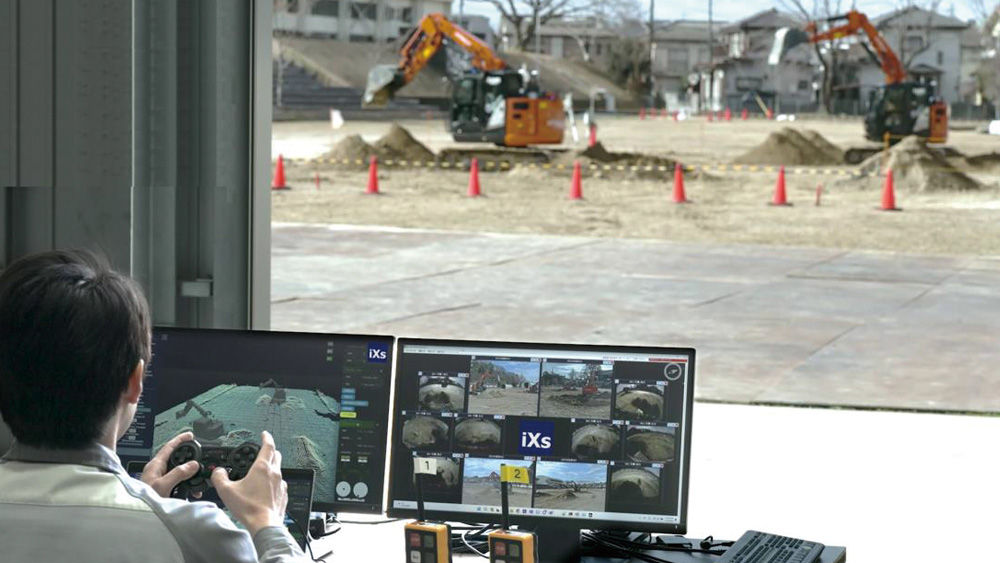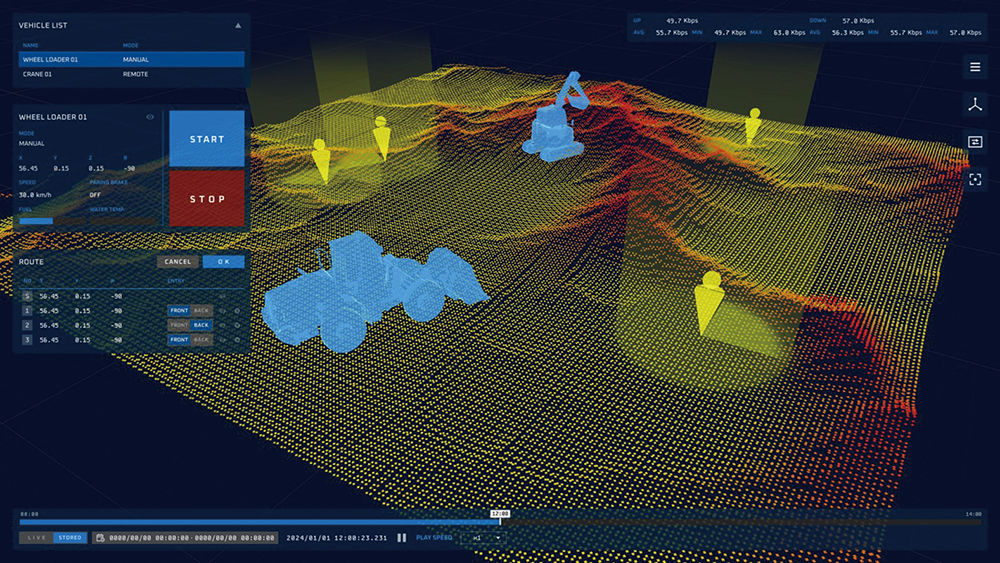CHALLENGE Beyond technological feasibility trials
Hitachi Construction Machinery is working on technological feasibility trials jointly with various companies in its quest to solve challenges in the civil construction, construction, and mining industries.
In addition to presenting an example, let us give an overview of the future of remote operation and automation.
In advance of the release of the RBT series, Hitachi Construction Machinery cooperated with Mitui & Co., Ltd. for technological feasibility trials of automation. At the sludge hardening treatment plant at industrial waste intermediary treatment site of Mitsui’s Yachiyo factory, the operation to pour sludge into the plant that the operator was in charge of was automated. Once the button on the machine body is pressed to set the positional information for the bucket at the location where the sludge is scooped up, a button is pressed at the location where the sludge is poured in to set the positional information again. Then, the operating mode is switched from on-board operation to automatic operation, and once the operator begins work with the remote control, the hydraulic excavator automatically scoops up sludge and pours it in. Even if the surface of the sludge lowers as the work progresses, sensors detect this and automatically adjust the bucket position, thus avoiding dry scooping. As this is repetition of simple operations, the machine body has only three buttons, including the shut-down button, allowing it to be controlled easily.
For the hydraulic excavator, EIZO Corporation, Silex Technology, Inc., and Hitachi Construction Machinery are developing and conducting technological feasibility trials of remote-control support technologies that can be used with the RBT series hydraulic excavators. When operating by remote control, normal two-dimensional camera images can make it difficult to judge depth, for example. Because of this, the team combined EIZO’s three-dimensional image processing technology and high-compression video transfer technology and Silex Technology’s communication technology to enable operators to gain real-time information about the sense of distance and the color of the soil using three-dimensional video, even in areas where the communications environment may not be reliable, such as mountainous areas. Besides this, Hitachi Construction Machinery cooperated with KATO Construction Co., Ltd. and NISHIO RENT ALL Co., Ltd. for technological feasibility trials of remote control of three types of machinery by switching in a single cockpit. The testing was conducted by installing remote operation devices on existing hydraulic excavators and other equipment and using the 5G communications network. These various technological feasibility trials confirmed effects that led to solving challenges on construction sites.

The key people tell us!
Five points for remote control and automation
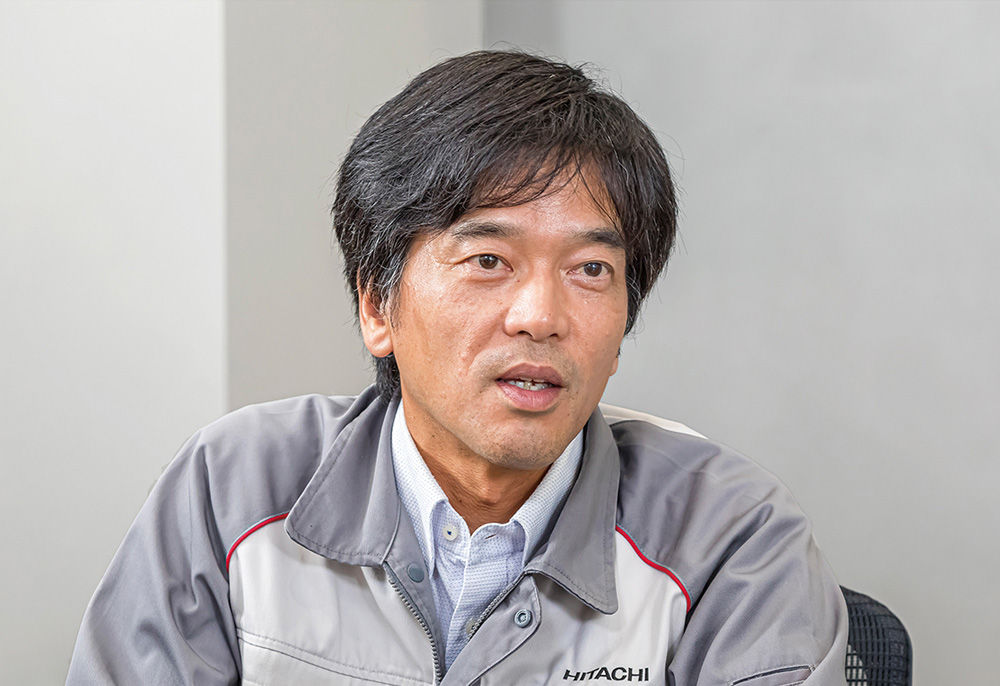
Katsuaki Kodaka
Construction Business Unit
Development Division.
Solution Carrier Products Development Department.
General Manager

Kazuki Sakai
New Business Creation Unit
Client Solution Division.
Product Planning Department.
Technical Support Section.
Manager
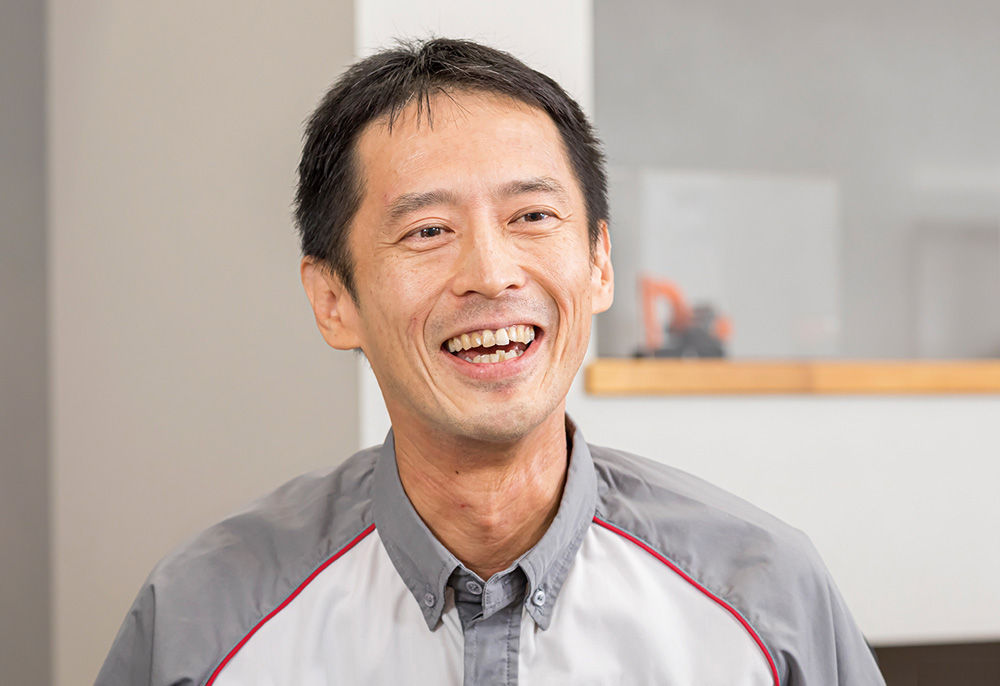
Shinya Imura
Research & Development Group,
Advanced Development Center
Associate Senior Manager
POINT 01:Improve productivity
With remote control, the amount of information about the conditions on the construction site may be limited compared to having a person on board because you rely on images from cameras installed on the machinery. So, if we introduce functions where the machinery assists with the work by having the machine body store work modes, such as excavating and loading, and then selecting the work mode when necessary, we can expect improved productivity. “We aim to provide solutions that add functions to automatically assist work, for example, and achieve the same speed and accuracy as work by people.” (Sakai)
POINT 02:Promoting working style reforms
Amid serious shortages in the workforce, working environments will become harsher if we rely on people to do all the work as we have done so far, which will create a vicious cycle that drives more people away. “If we had machinery that moves automatically without people on board, we can reduce work by people. This will solve the shortages in the workforce, naturally, but it will also lead to an improved working environment. In addition, as highly skilled workers are decreasing at present, it will also be possible to substitute machines to do the work making use of their know-how.” (Kodaka)
POINT 03:Open innovation
If Hitachi Construction Machinery were to create all kinds of solutions for remote control and automation on its own from the ground up, realistically there would be limitations in terms of time and expense, even if it were in technical fields that Hitachi Construction Machinery is skilled in. “It is necessary to find partners with superior skills and know-how in each field and move ahead together through open innovation. We are working on solving challenges with a range of partners, such as our co-creations with EIZO and Silex Technology.” (Sakai)

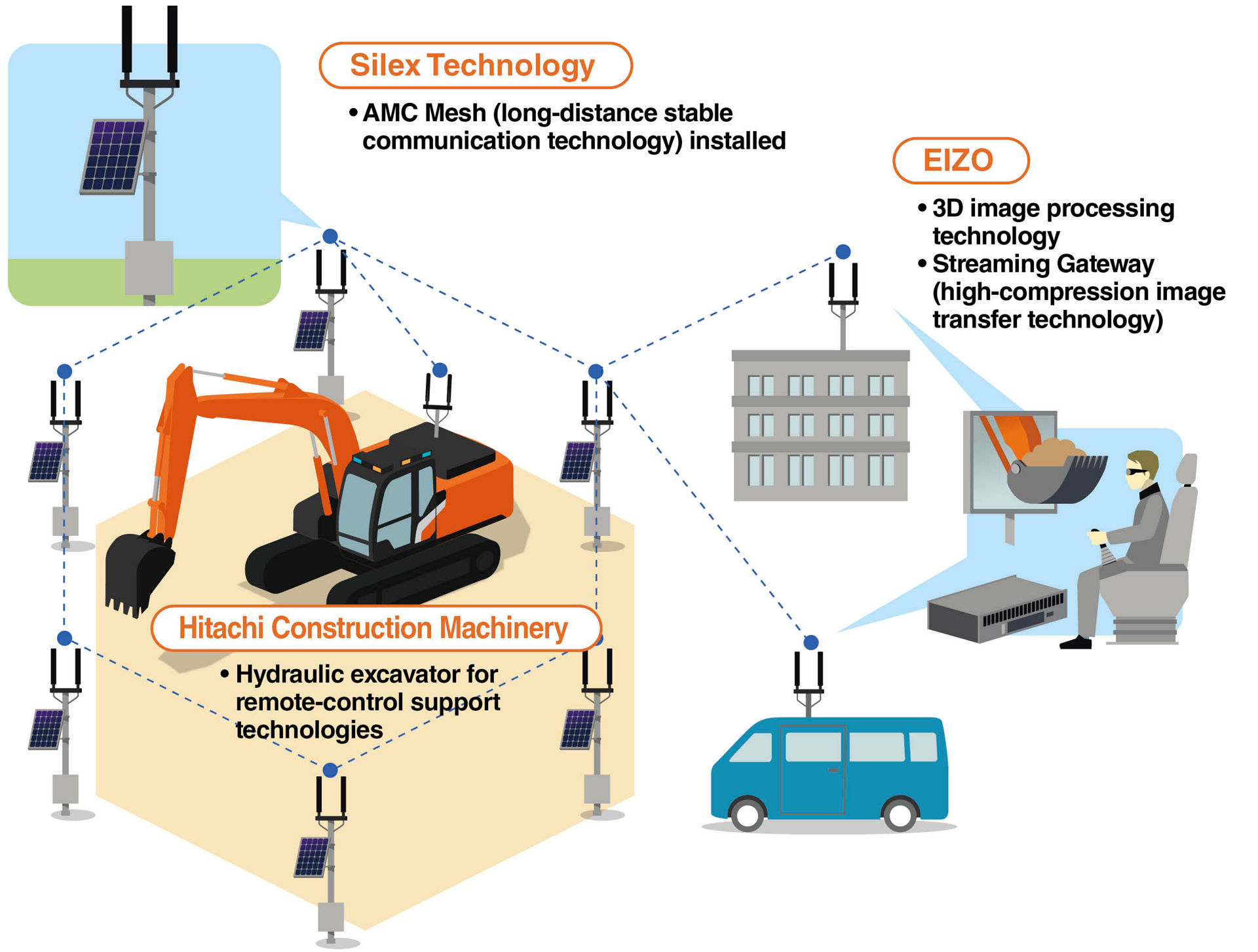
POINT 04:Collaborative safety
On a work site, safety comes first, beyond all else. Conventionally, people had to shout to encourage caution and to set up areas where nobody could enter during work to thoroughly ensure safety. “As remote operation and automation move ahead, multiple machines will move around a single site. If manufacturers other than Hitachi Construction Machinery also move ahead with remote operation and automation, we will need to share information with other companies’ construction machinery. Because of this, it will be extremely important to realize ‘collaborative safety’ by exchanging and sharing information between people, machinery, and systems.” (Imura)
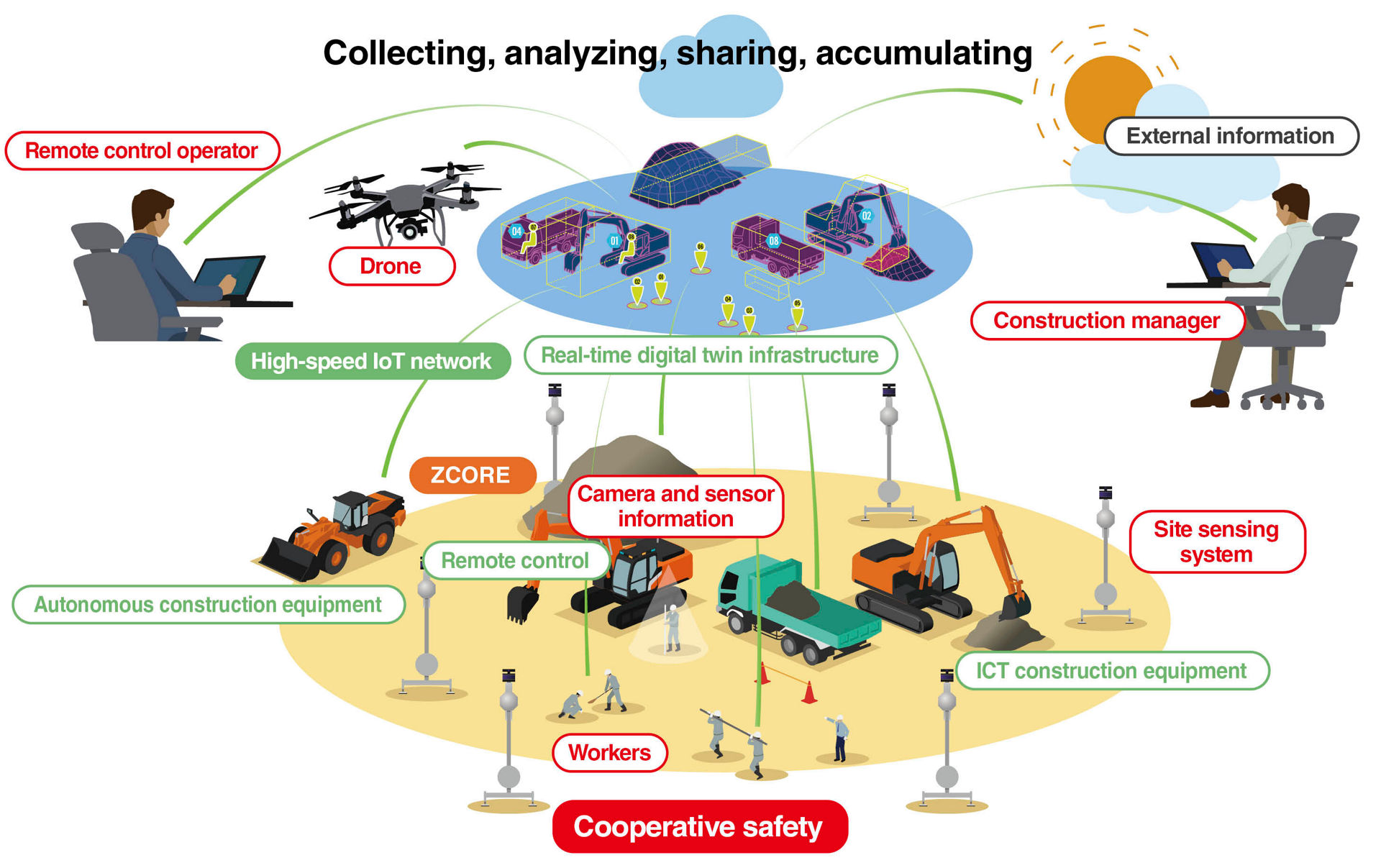
POINT 05:The future for research and development
Ease of collaboration with information holds the key for popularizing remote operation and automation. Hitachi Construction Machinery is working jointly with Maeda Corporation and iXs Co., Ltd. on technological feasibility trials of remote control and automation in collaboration with various data, such as testing interfaces for autonomous operation that connect a hydraulic excavator to the construction company’s system. “Our strength is being able to organize the shared elements of remote control and automation and link them with external systems as well. Based on this, we will move ahead towards more advanced remote control and automation.” (Kodaka)
